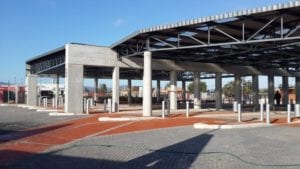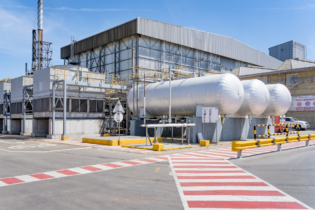One of South Africa’s leading building materials companies worked closely with Cape Town architects Stauch Vorster right from the design phase of South Africa’s first green taxi rank in Wallacedene, in the northern suburbs of Cape Town.
For the construction of the building, Lafarge South Africa supplied two of its innovative, market-leading products, Agilia self-consolidating concrete and Artevia decorative concrete. Both products met the requirement that all materials used in the taxi rank had to be environmentally friendly and contribute to a low carbon footprint for the facility. As well as producing high strength, durable concrete, Agilia and Artevia are popular with architects for extending the avenues of creative concrete expression. The Lafarge Tygerberg Readymix plant supplied 133 tons of Agilia concrete to construct the columns and beams of the taxi rank structure. The product’s exceptional fluidity enables it to fill all corners and areas in formwork or moulds without the need for vibration, while remaining homogeneous.It is also an ideal product for achieving smoother architectural concrete finishes with minimal need for remedial work. The Lafarge Readymix team from the company’s Cape Town branch provided technical advice and on-site support for the project.
Durability is a key issue in this type of high traffic public facility. Costing approximately R25 million, the taxi rank is expected to serve around 5 000 commuters daily travelling in 50 minibuses. The challenging aspect of running cost has been exceptionally well addressed with the structure’s PV panels and battery backup almost eliminating Eskom power usage. Stormwater is captured and stored in underground tanks and recycled for washing vehicles. “This has been a fascinating project,” comments Herbert Groenewald, Building Marketing Manager – Lafarge South Africa. “Lafarge is proud to have provided solutions for this taxi rank initiative and firmly believes it will be the model for future transport infrastructure development.”







